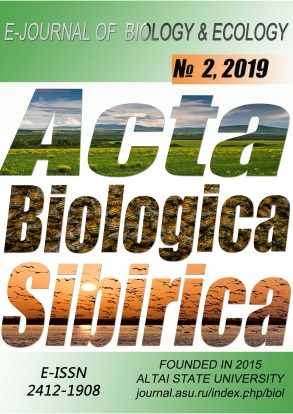Abstract
The Altai mountain country (AMC) is the highest uplift of North Asia, its biodiversity level is three times richer than Western Siberia. The biodiversity of the AMC territory has been explored for 200 years. At the same time, the greatest number of finds falls on the last 30 years since the beginning of a detailed study of the Altai mountainous country by specialists of the South-Siberian Botanical Garden of AltSU (Barnaul) under the guidance of the Botanical Institute named after. V.L. Komarova (St. Petersburg). In this study, botanical and geographic zoning of the AMC territory was performed with the use of open GIS systems (GeoJSON). A list of 42 world scientific depositories containing the information on animals, plants and fungi findings of AMC placed in the Global Biodiversity Information Facility (GBIF) was obtained. The gained information serves as a basis for systematists-researchers of the AMC territory flora and fauna to search for locations of materials storage in their research objects, as well as familiarity with their digital copy by a remote method. The described algorithm is effective and can be applied for other territories.
References
Filippova, N.V., Filippov, I.V., Schigel, D.S., Ivanova, N.V., Shashkov, M.P. (2017). Biodiversity informatics: global trends, national perspective and regional progress in Khanty-Mansi Autonomous Okrug. Environmental dynamics and global climate change, 8, 2, 46-56.
Flora Altaica. Vol. 1. (2005). R.V. Kamelyn (Ed.). Barnaul: “Az Buka”.
GBIF – Global Biodiversity Information Facility. URL: http://www.gbif.org/ (accessed on 10.03.2019).
Kamelin, R.V. (1998). Materials on the history of flora of Asia (Altai mountain country). Barnaul: Altai State University Press (in Russian)
Olson, D.M., Dinerstein, E. (2002). The global 200: Priority ecoregions for global conservation. Annals of the Missouri Botanical Garden, 89, 2, 199-224.
Vaganov, A.V. (2018). Prospects for studying and preserving the biodiversity of the Altai-Sayan ecoregion in the context of the development of open databases. Ukrainian Journal of Ecology, 8, 2, 380-382. doi: 10.15421/2018_357

This work is licensed under a Creative Commons Attribution 4.0 International License.





